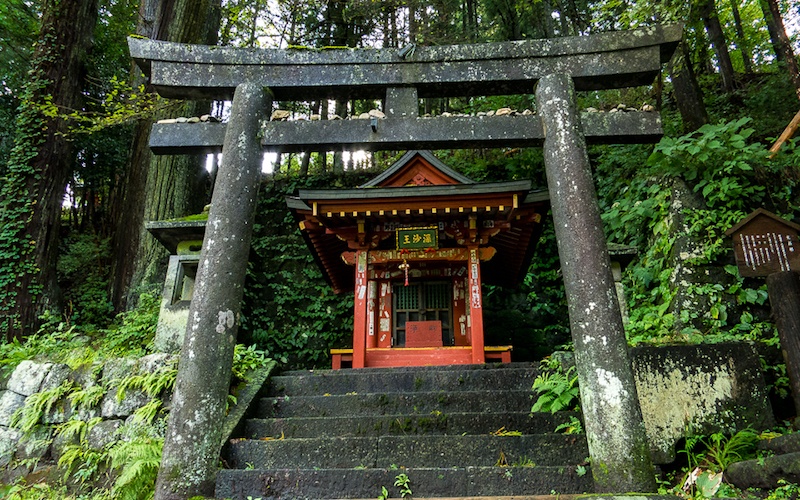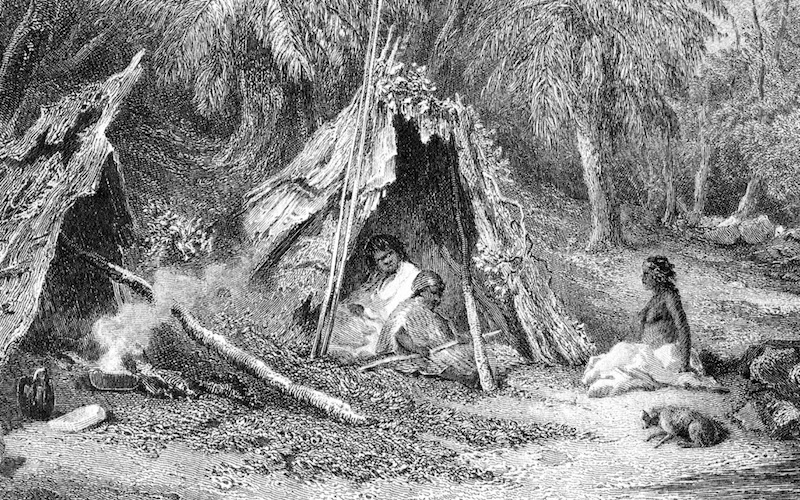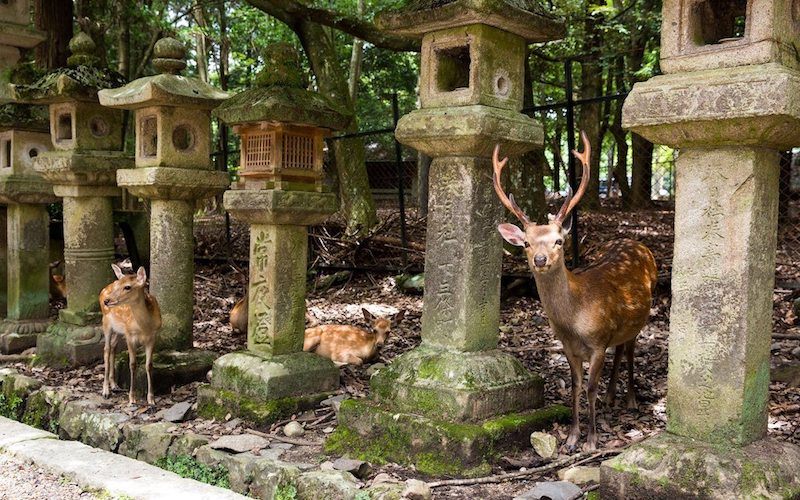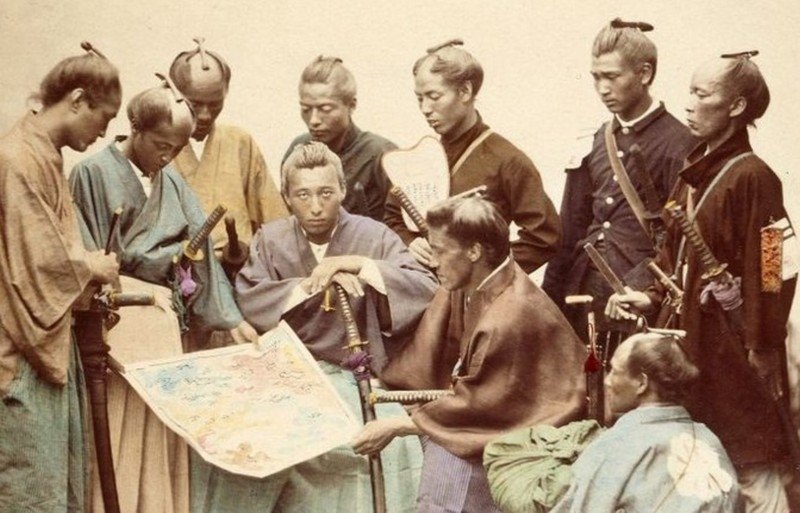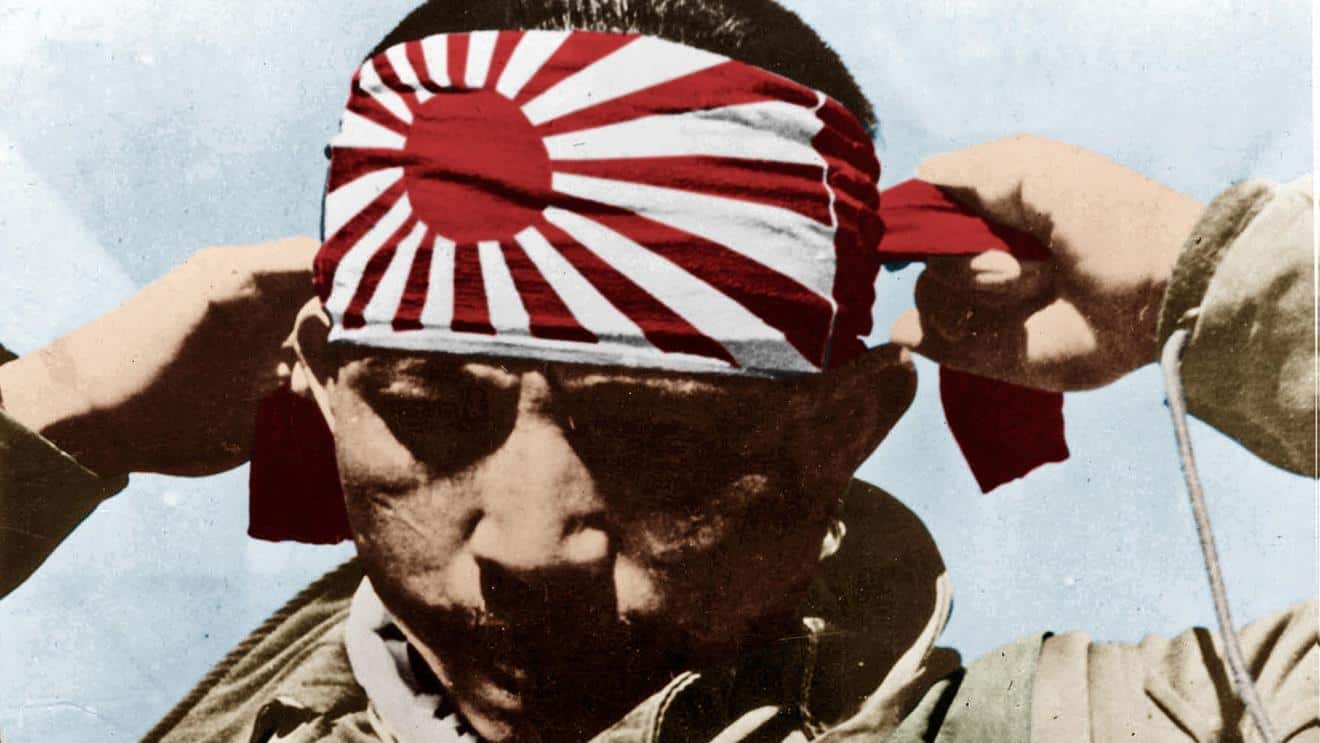
Shintoism is both an uncommon polytheistic religion and a mythology that belongs exclusively to the Country of the Rising Sun, Japan. How important is Shinto for the contemporary Japanese and what rituals they still preserve and respect? What are their main religious festivals? What are the main mythological, archaic and shamanistic origins of the Shinto traditions? How the particular cosmogony influenced the view about good and evil? In what manner Buddhism intermixed with later Shintoism? What about the Shinto pantheon of gods, heroes and mythical creatures? The following material will help you find out the answers.
In the late Pleistocene Era the Japanese archipelago was connected to the Asian continent in the north and south by land masses. The prehistoric population of Japan was formed from ethnically diverse groups which migrated from various places like north, east and south China, the Korean Peninsula, the Ryukyu Islands, Siberia, Indochina and even the Indonesian area. Because of this, the exact origin of the Japanese people remains to this day an enigma which stimulates researchers to produce captivating theories. After the glaciers gradually melted, Japan’s islands became isolated and the contrasting cultures slowly combined into what scientists generally call the Jomon people. Not only were they ethnically and culturally diverse, but they also settled in different regions of Japan, shaping very diverse local cultures. Bearing in mind that the ... existence of Jomon culture has been found to cover a tremendous period of time archaeologists have divided the Jomon period into at least four parts: incipient, early, middle and late. The main features of the Jomon cultures have been identified through comparative studies of discovered vessels, pottery figurines, bone and stone jewels, tools, skeletons, primitive dwellings, and traces of varied food consumption.read more
The Early Antiquity of the Country of the Rising Sun is positioned at the border between archaeology and history. There are no contemporary Japanese written records describing this era; the only contemporary written records are found in the Chinese chronicles. The official Japanese manuscripts Kojiki and Nihon Shoki, written at the beginning of the eight century, merge historical facts with mythology in portraying ancient events. Due to this, most scholars refer to this timeline as the heroic and romantic period in the history of Japan. Yamato Takeru was the most important legendary hero, a character comparable to Achilles, Hercules or Arthur from Western folklore. From a scientific point of view, this period is divided into two parts: Yayoi and Kofun. According to classical theories, the Yayoi people migrated from Korea ... and China into Japan starting from 300 BC; however, newer studies suggest that the first migrations happened in 900 BC. They introduced agriculture and tools and weapons made of bronze and iron, creating the perfect conditions for a sedentary society. The population grew exponentially, and soon the traditional villages organized themselves into competing tribe federations and small kingdoms. In order to legitimize their position, the first Japanese leaders claimed to have a divine right to rule. The symbols of their rule were bronze bells, mirrors and swords received from the Chinese dynasties, that had the title Okimi inscribed on them, meaning great kings. The transition to Kofun happened in 250 AD, when various strong sovereigns ordered the construction of huge burial mounds as a symbol of their might. From all the incipient kingdoms of Japan, the Yamato clan gained hegemony, using a complex strategy by combining war with trade, diplomacy, political marriages among noblemen, vassal relations and religious ideology.read more
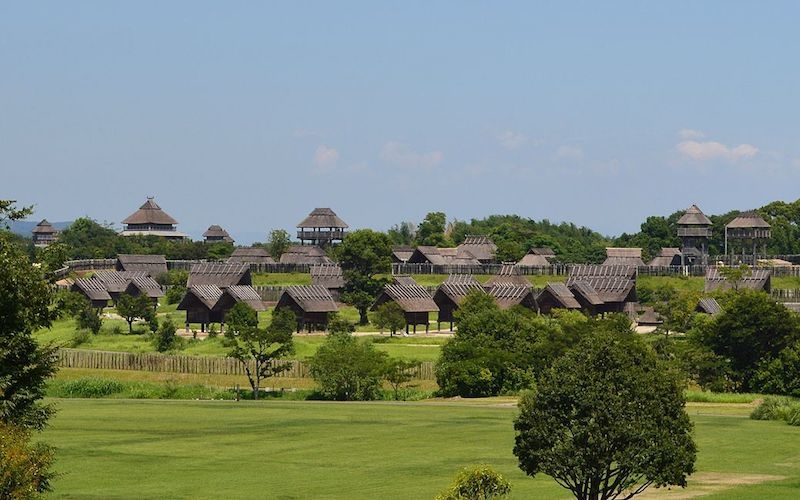
Yayoi
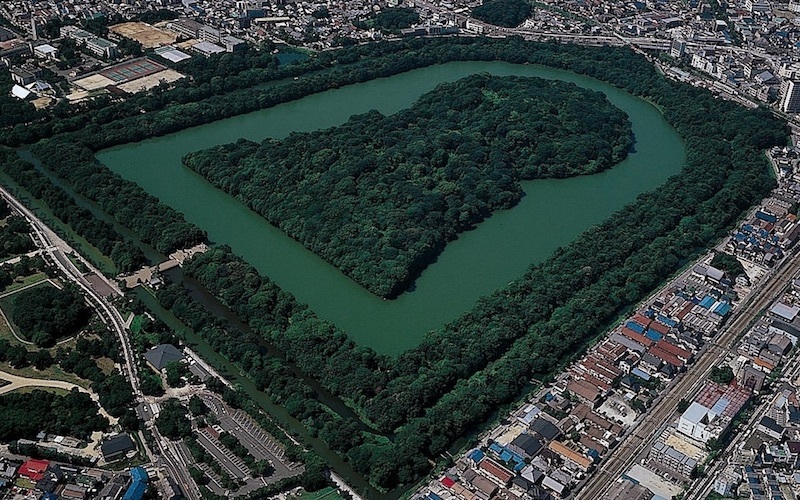
Kofun
While Europe experienced a violent Dark Age after the fall of the Roman Empire and the Barbarian Invasions, and while the Middle East and Northern Africa were also marked by the Early Muslim conquest, the history of East and South Asia was completely different. In comparison with other regions of the world, the Far East enjoyed a relatively long period of peace and stability, with an economic and demographic explosion. The Tang dynasty of China (681 - 907 AD) was arguably the most advanced empire of its time. Under the guidance of Tang, culture and technological innovations flourished. As a neighboring country, Japan initiated an incredible process of modernization based on the Chinese model. Exactly as they did when Japan was modernized according to the Western model, the ancient Japanese ... scholars traveled to the court of the Tang dynasty to study their methods of political and economic organization. On their return they became influential leaders who managed to push political, economic, military, religious and cultural reforms at a breathtaking pace. Looking back at the ancient past we can observe that Japan’s notable performance in the last two centuries is not a coincidence. After the society assimilated the most important values and practices from their neighbors, the Japanese civilization truly emerged by developing a strong national conscience in the ranks of the elites and by providing an authentic and original spiritual expression, materialized in works of art of universal value. With those considerations in mind, some historians rightfully named this stage as the Classical Antiquity of Japan. This timeline is traditionally divided into three parts: Asuka, Nara and Heian. Asuka is notable for the apparition of a Japanese written system using Chinese characters, and for the adoption of Buddhism, Confucianism and Taoism. Shortly afterwards, Buddhism and the archaic Shinto became in practice a syncretic religion meant to legitimize the rule of the divine emperor. The first prominent leaders of Japan, whose existence is certified by historical sources, appeared at this time. Through the power of their own personalities, they initiated the Taika reforms, shaping an efficient and centralized Japanese state. Massive infrastructure building projects were commenced. All the land was collectivized and the tax system was much improved. The Seventeen Article Constitution was presented as a philosophical moral guide for the political elite, followed by the first administrative, penal and civil codes of law. Those reforms were deepened during the Nara age and strengthened by the rise of a Japanese national army and by the decisive defeat of the Ainu tribes in northern Honshu. Nara is also remarkable for the systematization of an official religion, represented by the building of magnificent Shinto temples and Buddhist monasteries. Woodblock printing supported the spread of Buddhist ideals as the printing of one million prayers named Hyakumato Darani was ordered. Man’yoshu, meaning the Collection of Ten Thousand Leaves, the first great work of Japanese literature, was published. Finally, Heian can be described as the moment when the ancient Japanese high culture reached its peak, with the Fujiwara family dominating the political scene. Maybe the most illustrious example is the masterpiece novel ‘The Tale of Genji’, written by the Heian lady-in-waiting Murasaki Shikibu. Although it was conceived in the classical period, it is considered by many specialists as the world’s first modern novel because it has numerous elements of psychological analysis in the prose. It's worth mentioning that the Japanese aristocratic women enjoyed preferential treatment in comparison with other major cultures from ancient times, having the right to be educated, to own property and even to fight in wars. Heian ended when the sophisticated aristocratic families were gradually replaced by an emerging warrior class, later known as the samurai.read more
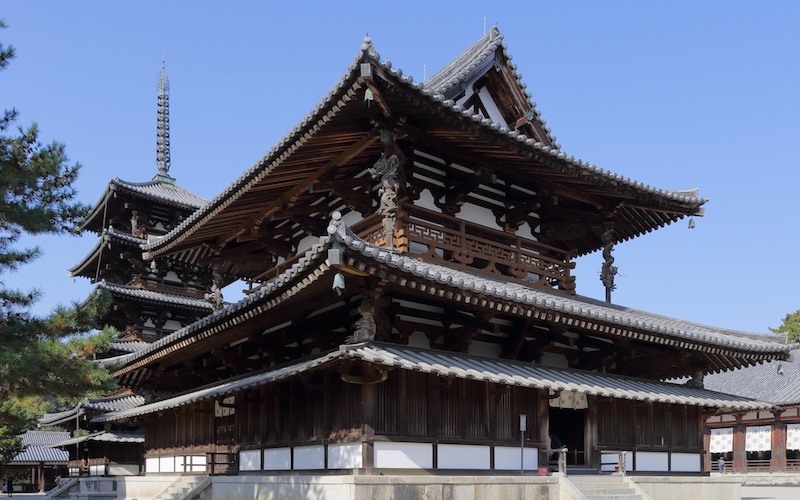
Asuka
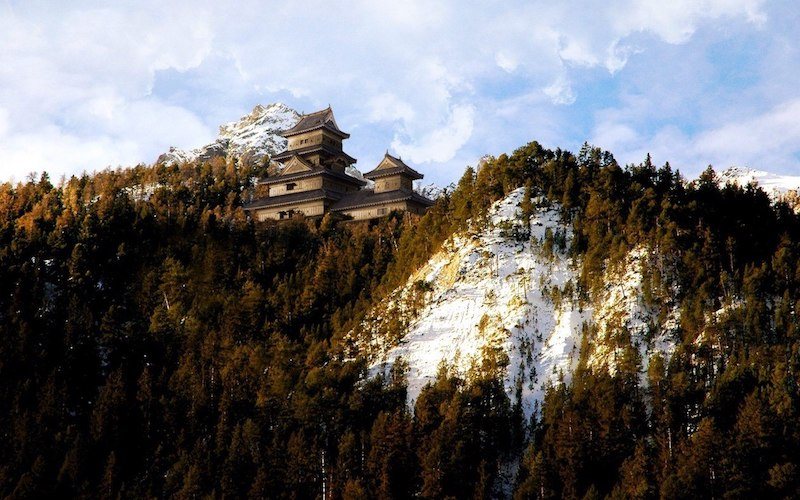
Nara
A common identity, based on some core shared values, can be identified at the foundation of any civilization. In ancient times, religion played a key role in shaping a general conscience. Starting from a wide range of archaic animistic beliefs, Shinto slowly transformed into a state religion, legitimizing the hegemony of the clan leaders and the rule of the first Japanese kings called Okimi. Shinto as we know it today is the result of a complex combination of folklore myths from immemorial times, a constant evolution of collective moral consciousness, economic prosperity closely connected with the division of labor and political intervention, in which the Shinto beliefs were reorganized for personal gains. The second step was the adoption of Mahayana Buddhism in the fifth century AD. Buddhism immediately became a ... work ethic and a guide for daily interactions between individuals. It also provided the moral support for amazing political, economic and military reforms. In time, Shinto and Buddhism became more and more a syncretic religion, building a strong base for the absolute authority of the Japanese emperor. Furthermore, the debates on the topic of religion provided a vigorous source of inspiration for the first great Japanese works in the fields of statecraft, philosophy, history, literature, architecture, sculpture, painting, music and dancing. Finally, an elementary form of political organization will grow into a state when the neighboring countries acknowledge its existence as a sovereign entity. This is even more true for Japan because the ancient Chinese and Korean states invented a writing system much earlier. At least for the first phases of the Antiquity, all the written sources mentioning the Land of the Rising Sun are foreign. In short, this article wants to answer two important questions: How did the particular spiritual and material elements interact with each other in order to change mentalities, politics and the ancient Japanese society as a whole? and, In what manner did religion and the awareness of otherness contribute to the rise and the consolidation of incipient Japanese statality?read more
For a long period of time, many scholars, specialized mostly in history and philosophy, treated ancient Japan with disinterest, favoring other parts of its history. The decision was motivated by an objective factor. The country of the Rising Sun, at least during this timeline, was perceived as an insignificant culture that copied everything from the glorious Chinese civilization. In contrast with this complicated and sometimes even exhausting problematic, the feudal warlords, the samurai class and the Second World War had attracted the attention of the Western public to a larger degree. The virtual lack of preoccupation of Japanese researchers to facilitate the translation of their studies amplified the difficulty in understanding the first centuries of Japan’s past. However, the situation changed dramatically in the last three decades, with more and ... more authors, coming not only from various areas of historiography, but also from archaeology, anthropology, folklore studies, and sociology, emphasizing the scientific importance of this period. The most interesting pieces put together by them can be summarized in the identification of remarkable political reforms done with very limited technological and technical support, in bringing to light a very rich written culture that represented the voices of all the social clusters, and in the inquiry of competing views that entered the archipelago from various places of East, South and North Asia. Their multi-leveled analysis unearthed many fascinating patterns that indicated the presence of an early Japanese civilization as a separate and distinct body. They concluded that the process of borrowing religious doctrines and methods of governance from abroad was firstly motivated by an incipient self-awareness and desire for political survival, found especially in the ranks of the ruling elite. The incorporation of new elements was immediately followed by a subjective process of selecting and adapting everything to the local specificity of an island nation. The transition was fluent but its synthesis and complete assimilation took time. The development of several variables can be noticed going through the Jomon, Yayoi, Kofun, Asuka and Nara eras. Their interactions made specialists like Delmer M. Brown define an authentic Japanese metaphysical worldview, suggested in the concepts of linealism (or linearism), vitalism and optimism. This chapter tries to present and explain the relevant works in the field.read more
